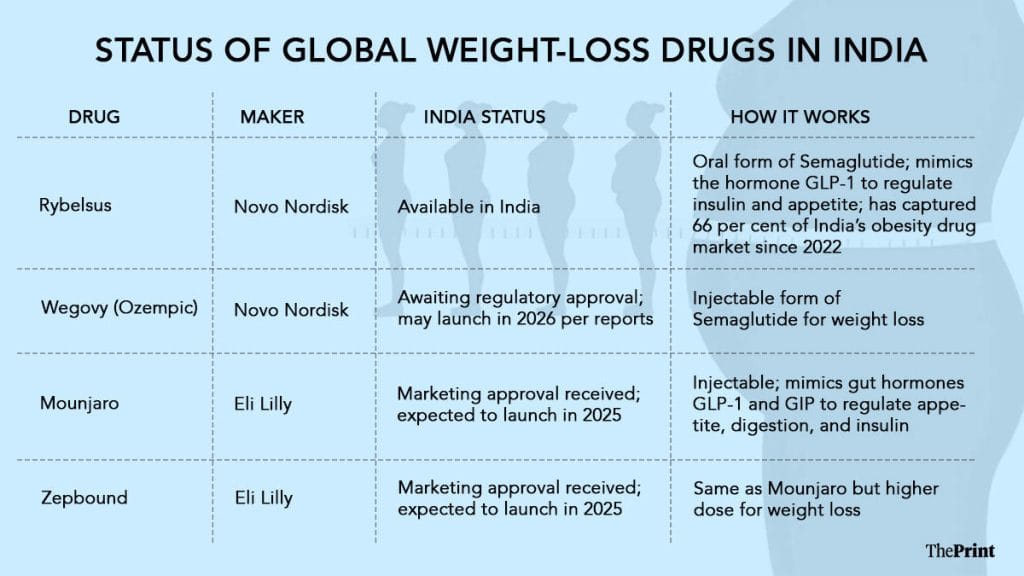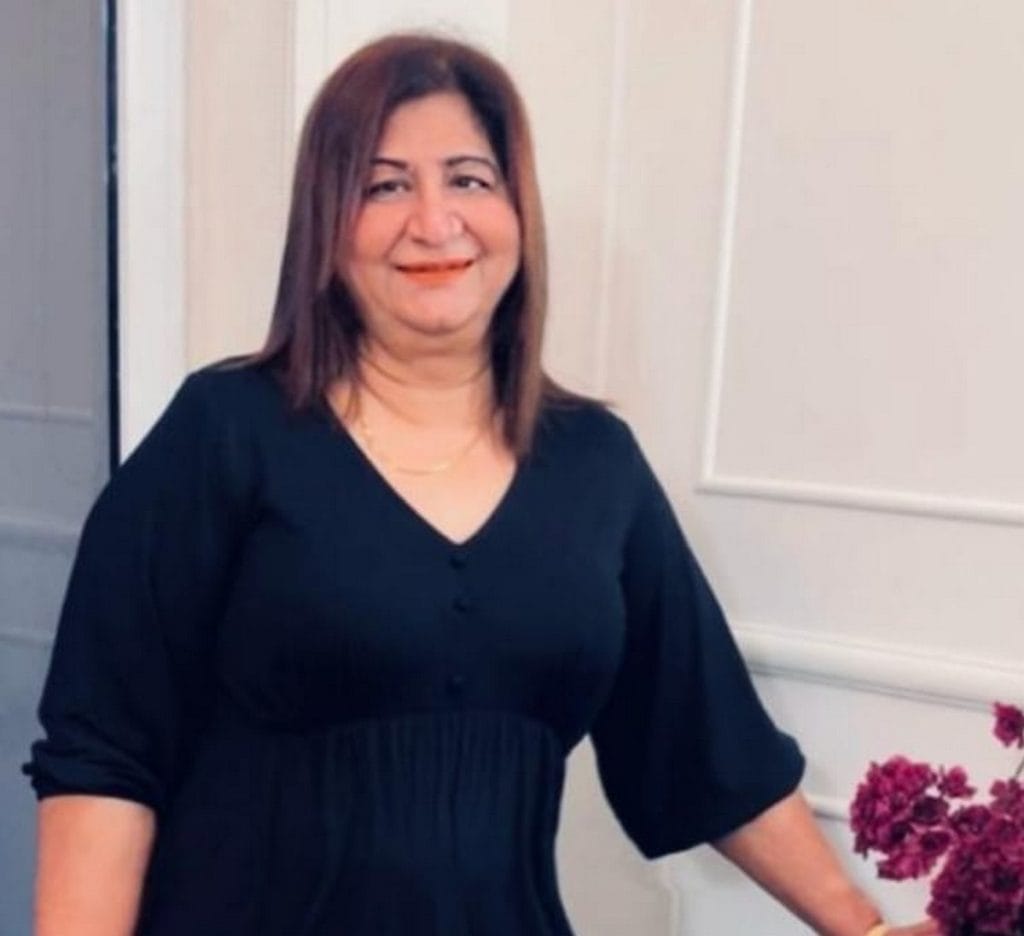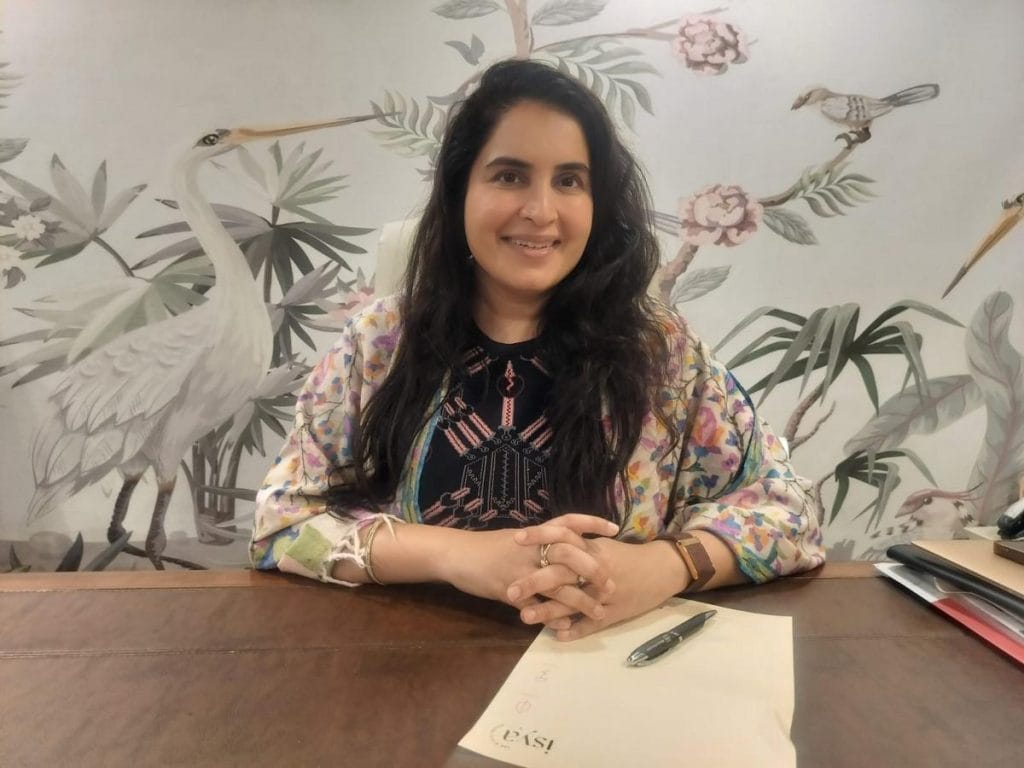New Delhi: At 66, Dr Dimpy Kapoor is making up for lost time. She’s attending parties, lunches, and family gatherings in sequinned shirts and red satin dresses she wouldn’t have worn a year ago. Fifteen kilos lighter, she’s more confident about her appearance than she’s been in decades.
She credits Mounjaro, an injectable diabetes drug that has become one of the most sought-after weight-loss treatments in the world. It took her from 95 kg in November to 80 kg in just three months.
“For a person like me, at 66, whose husband is bedridden, people say, ‘What’s left in life, chhaddo (leave it).’ But I’ve reclaimed my life and time. Losing weight has helped me unlock my room’s door and venture out,” Kapoor told ThePrint at her swanky South Delhi apartment, sipping fresh orange juice.
Kapoor had been dealing with diabetes, declining stamina, and rapid weight gain after crossing 60. The extra kilos led to blood pressure problems and rising sugar levels. Her children intervened, begging her to lose weight. When all else failed, a doctor first prescribed her Ozempic (Semaglutide) and then Mounjaro (Tirzepatide), an injectable drug originally approved for diabetes.
Drugs like Mounjaro and Ozempic mimic gut hormones that regulate appetite and insulin. They curb hunger, slow digestion, and help control blood sugar. Originally meant for diabetics, they are now the world’s hottest weight-loss fix. Demand is exploding in India. People are spending Rs 80,000 on a six-month course or scouring the black market for a shot.

But these drugs aren’t a miracle cure—they don’t work for everyone, and the weight can come back. But for diabetics and obese patients, it’s changing lives. For some, it’s the difference between being stuck at home and stepping back into the world. But it’s also becoming a vanity drug.
Bollywood stars are strutting around with leaner bodies but denying using these injectables. Fans zoom into before-and-after photos, scanning Priyanka Chopra’s jawline or Karan Johar’s cheekbones for signs of ‘Ozempic face’—the hollowed-out look from sudden weight loss. Kusha Kapila and Ram Kapoor have both recently denied using Ozempic and waxed eloquent about their diets and workouts after rumours over their newly toned physiques.
A box of injections is Rs 80,000 and it is a 6-month-long course. Not everyone can afford it but I have seen a drastic change in myself. I am taking care of myself again. It is a new lease of life for me
-Dimpy Kapoor
Goldman Sachs predicts the global anti-obesity drug market will grow sixfold to $100 billion by 2030. But in India, demand is far outpacing supply. Tirzepatide—with Mounjaro approved for diabetes and Zepbound for weight loss—is expected to be available in India in 2025. Semaglutide is available in pill form as Rybelsus for diabetes, but its higher-dose injectable version for weight loss, Wegovy, is unlikely to hit the shelves before 2026. Meanwhile, Indian pharmaceutical companies like Cipla, Sun Pharma, and Dr Reddy’s are reportedly working on their own versions.
Until then, many well-to-do Indians are getting their hands on injections through any means possible for a slimmer, trimmer body—including bringing them from abroad. But the effects don’t always last. Some regain the kilos within months, while others deal with nausea, hair loss, and gastric troubles.
Doctors are also raising alarms over how widely these drugs are being used by people who don’t have diabetes or obesity.
“With over-the-counter use, people are misusing this drug meant for diabetic, obese patients,” said Dr Sudhir Kalhan, bariatric surgeon at Sir Ganga Ram Hospital. “People who actually need the drug [are struggling] because people are using it only for weight loss, straining supply.”
When nothing else works
At some point, Dimpy Kapoor says, everyone has a moment where they look in the mirror and don’t really recognise the person staring back. For her, that day came during the Covid-19 pandemic.
A cosmetologist herself, she was going through a low ebb in her life.
Her husband had suffered a stroke and was bedridden. Her days revolved around hospital visits. The isolation of Covid only added to her anxieties.
And so, locked in during the pandemic, she started a cosmetics line called Not So Ordinary. She started small, making creams at her own house, but slowly the business bloomed and she sub-contracted manufacturing to a factory in Mumbai.
The new business infused new energy in Dimpy’s life. It gave her purpose and helped her expand her social circle. But the comments on her weight were endless, making her feel less confident.

“I used to weigh only 42 kg until I delivered my first child in 1985. After the delivery my weight climbed up to 82 kg and it remained stable there. I was busy in my life, and never really cared about the weight,” Kapoor said.
But as she grew older, the weight started creating issues. Her stamina suffered, her knees grew weak, her blood pressure increased. She tried everything—lifestyle changes, weight-loss programmes—but nothing worked.
“I tried every damn thing. But I always felt like I looked like a pregnant penguin,” she said.
A year ago, looking at celebrities ‘magically’ losing weight, Dimpy also decided to try Ozempic injections and Semaglutide tablets.
“That made me feel extremely nauseated, and I was unable to stick to schedule with the injections. Even though I lost 8 kg, life got the better of me and I stopped taking the injections,” she said.
When it comes to fat loss, people have this misconception that it all has to do with will power. I think that’s full of crap
-Dr Kiran Sethi, cosmetologist
She consulted top doctors in Mumbai and Delhi, but nothing seemed to work—until one finally prescribed Mounjaro. According to doctors who spoke to ThePrint, the drug isn’t available in India yet, but patients can source it from abroad.
At Rs 20,000 per injection, the price was steep—but Kapoor was desperate.
“A box of injections is Rs 80,000 and it is a 6-month-long course. Not everyone can afford it but I have seen a drastic change in myself. Now my blood pressure is under control—it has come down from 175 to 120. I have lost 15 kg, and it helps me move better. My skin is radiant. I am taking care of myself again. It is a new lease of life for me,” she said with a twinkle in her eye.
Unlike Semaglutide, which only targets the GLP-1 hormone to regulate insulin and appetite, Mounjaro also activates GIP. This second hormone improves how the body processes sugar and increases feelings of fullness, making Mounjaro potentially more effective for both weight loss and blood sugar control.

Now Dimpy swipes through her phone, flaunting before-and-after photos.
“Senior citizens want to age gracefully and are conscious of how they look. People tend to give up on life after 55, but that’s really when the degeneration of their body starts. I say my life has been on the ascendant since I started on these medicines. I feel like my old self again—whom I had lost somewhere on the road,” she said.
For Dr Kiran Sethi, a Delhi cosmetologist who also provides weight management services, drugs like Mounjaro are a boon for those who cannot lose weight just through diet and exercise.
“When it comes to fat loss, people have this misconception that it all has to do with will power. I think that’s full of crap,” Sethi told ThePrint at her clinic in Vasant Vihar.
According to her, fat cells secrete hormones that make it difficult to lose weight. Stress makes it harder as does the ubiquity of junk food.
“Life doesn’t make it easy to lose weight. It is horrible to tell people that they have a self-discipline problem. It is inhuman to treat people like this,” she added.
India, the diabetes capital of the world, is also battling a weight problem. One in four Indians is now overweight—a paradox in a country still dealing with malnutrition.
Before Semaglutide, weight-loss pills were unreliable and based on little more than pseudo-science. But since the drug came to India in 2022, it has captured 66 per cent of the obesity drug market.
But as the rush for Semaglutide intensifies, some diabetes patients are left struggling to access the drug.
Weight fluctuations can be a side effect of the drug. Dr Kalhan said it could contribute to the ‘yo-yo’ effect, where lost weight comes back instantly, sometimes “with a vengeance”.
Diet culture vs diabetes
Charvee, a 25-year-old content writer from Delhi, has a complicated relationship with Semaglutide. The weight fluctuations have frustrated her, but after a long struggle with medications she couldn’t tolerate, it’s the only thing keeping her diabetes in check.
At 21, Charvee was diagnosed with Polycystic Ovary Syndrome (PCOS). Hormone therapy helped, but she still struggled with blood sugar spikes, mood swings, and fluctuating energy levels. Then the pandemic hit, and her weight shot up from 70 kg to 82 kg.
“I got these red and purple stretchmarks on my lower belly. I hated them. They really depressed me,” she said.
Then, when she was 24, she was diagnosed with type-2 diabetes.
Her doctor started her on metformin to control her blood sugar, followed by a prescription for Semaglutide in 2023. The side effects were brutal—nausea, hair loss, acid reflux. But she also shed 8 kg.

The mirror made her happy, but then her progress stalled. The cocktail of drugs she was taking no longer agreed with her.
“Toward the end of 2023, my weight loss plateaued, and I was falling sick very often. These drugs reduce your body’s immunity and you could even become immunocompromised,” she said. “I was also experiencing a lot of gag reflex, so I stopped taking Semaglutide. I instantly bloated,” she told ThePrint at a café in Hauz Khas.
Her doctor then switched her entirely to Semaglutide for diabetes management. It worked.
“My HB1Ac has come down to pre-diabetic levels, I look thinner, and have more energy. My diabetes is under control for now,” she said.
Am I looking at a fat woman who has lost weight, or a thin woman who has gained weight? I sometimes don’t understand
-Charvee
But getting the medication she needs is a challenge. She relies on Rybelsus by Novo Nordisk, the only form of Semaglutide available in India. A monthly supply costs Rs 10,000, but since her pharmacist often runs out of stock, she’s forced to hoard it.
“Since I have been buying from this particular pharmacist, he keeps a stock for me. But sometimes he asks me to buy more because even he isn’t sure where the next supply will come from,” she said. “The medicine is always sold out since people looking to lose weight are always buying it.”
The drug has also changed the way she sees her body. She has experienced ‘Ozempic face’ in the past, where her eyes seem sunk in, and the skin looks like it’s sagging. The mirror plays tricks on her.

“Am I looking at a fat woman who has lost weight, or a thin woman who has gained weight? I sometimes don’t understand,” she said.
Weight fluctuations can be a side effect of the drug. Dr Kalhan said it could contribute to the ‘yo-yo’ effect, where lost weight comes back instantly, sometimes “with a vengeance”. Patients can end up putting on double the weight they lost.
“It is not a sustainable form of weight loss,” he said. ‘One would have to be on it forever, and be very careful when one takes it. Young people who are not diabetic-obese should definitely not take it.”
Dr Sethi follows a strategy of starting patients on Semaglutide slowly and then gradually weaning them off.
“We don’t want people to be on the medicine forever,” she said.
While she can only prescribe Semaglutide, she often sees patients who have managed to get their hands on Ozempic, sourced from friends or relatives in the US. They turn to her for help in administering it. In India, Ozempic costs Rs 10,000 per injection on the black market.
But those who expect to keep shedding kilos without any effort are often disappointed. Sethi says weight loss tends to plateau at 15 kg.
“Men lose weight very fast. For women it is much more difficult, and one has to infuse it with protein intake as well as strength training and workout,” she added.
Also Read: Ozempic on steroids? Successor that could cut down weight in half the time coming soon
‘Offensive’
While Dimpy Kapoor is basking in Mounjaro’s effects, shopping for clothes she wouldn’t have considered before, Charvee is trying to accept her body for what it is.
She hits the gym, lifts weights, and gets satisfaction out of feeling the slow build-up of muscle under her skin. She says she has stopped caring about the gaze of the world, which insists that any woman who is not thin is a failure.
“The purple and red stretchmarks have now blended into my skin colour. I own them. I am not obsessed with losing weight anymore. I just want to live a healthy life, “ she said.
But for that, she still needs Semaglutide for her diabetes—even if it means racing to get it before the aspiring slimmers do.
“As a diabetes patient, I actually find it very offensive,” she said.
(Edited by Asavari Singh)






